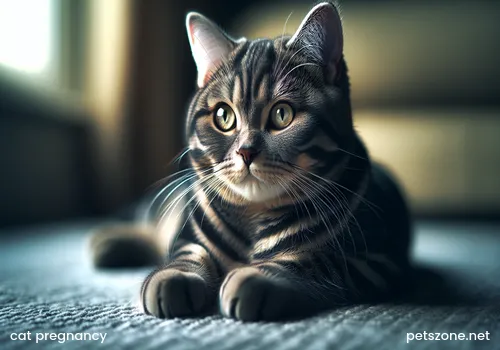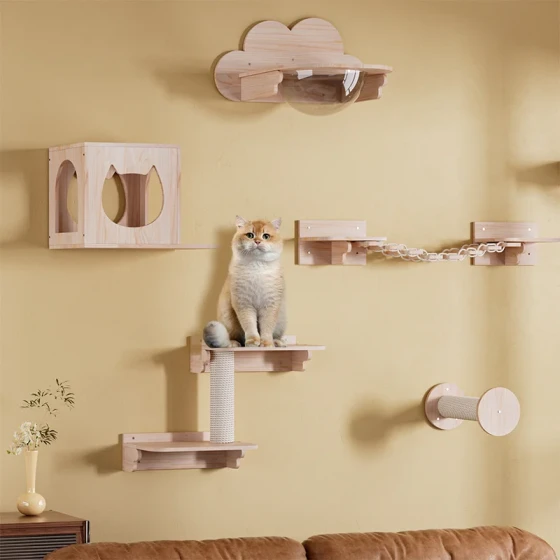Is it dangerous if a cat does not give birth after more than 70 days_Analysis of the harm of prolonged pregnancy to the mother cat
A cat's pregnancy usually lasts between 58 and 71 days, with an average of about 63 to 65 days. If a cat has been pregnant for over 70 days without giving birth, this may be dangerous and requires immediate attention and timely veterinary care. Prolonged pregnancy may indicate difficult labor or other underlying health issues, which can harm both the mother cat and the kittens.

The normal pregnancy duration of a cat is generally around two months, specifically between 58 and 71 days, with an average gestation period of 63 to 67 days. Some sources also mention an average of 63 days. Most of the cat's gestation period is around 63 days. If no labor occurs after 72 days, immediate veterinary examination is recommended. Kittens born before 58 days usually have a low survival rate, and giving birth after 67 days is considered overdue.
Why is prolonged pregnancy dangerous?
If a cat's pregnancy lasts longer than the normal period, especially over 70 days, it is called overdue pregnancy or prolonged gestation. This is similar to the human saying "when the melon is ripe, it drops"; if labor does not start on time, problems may arise. Prolonged pregnancy can lead to various dangerous situations:
- Dystocia (Dystocia): This is one of the main risks of prolonged pregnancy. Dystocia refers to a difficult labor process or the inability to deliver the fetus naturally. It can be caused by various factors, including oversized fetuses, abnormal fetal position, weak uterine contractions in the mother cat, or abnormalities of the birth canal.
- Fetal risk: Overdue pregnancy may put the fetus at risk inside the uterus. The placenta's function may decline as the pregnancy extends, leading to insufficient oxygen for the fetus, causing hypoxia or even death. If the fetus is too large, it may get stuck in the birth canal during delivery, causing danger.
- Damage to the mother cat's health: prolonged labor can cause the uterus to become tired and ineffective (uterine inertia). Long periods of labor and contractions greatly exhaust the mother cat, potentially leading to collapse. Severe dystocia may require surgical intervention, such as a caesarean section, which itself carries certain risks. Additionally, though rare, uterine rupture or uterine torsion may occur in late pregnancy or during delivery, threatening the mother cat's life.
Possible causes of prolonged pregnancy
Prolonged pregnancy in cats may be caused by multiple reasons, just as humans going past their due date cannot be attributed to a single factor. Some possible causes include:
- Fetal factors:
- Oversized or malformed fetuses: With a single fetus or a small number of fetuses, they may grow too large, causing delivery difficulties. Fetal malformations can also impact normal delivery.
- Abnormal fetal position: If the fetus is in an abnormal position or posture in the uterus or birth canal, it may obstruct smooth delivery.
- Fetal death: If a fetus dies inside the uterus, it may cause stalled labor.
- Mother cat factors:
- Uterine inertia: The mother cat's uterine contractions are too weak or unable to contract properly to push out the fetus. This may be primary (the uterus fails to start effective contractions) or secondary (uterine fatigue caused by prolonged labor). Age, obesity, insufficient hormone secretion, and fat infiltration of the uterine muscle layer may lead to uterine inertia.
- Birth canal abnormalities: Narrow pelvis, previous fractures, vaginal or cervical malformations can block the birth canal and affect delivery.
- Systemic diseases: If the mother cat has other illnesses during pregnancy, such as toxemia or diabetes, these can also affect normal delivery.
- Stress: Excessive psychological stress may suppress labor, especially in first-time mothers.
- Other factors:
- Breed: Some brachycephalic breeds (such as Persian and Himalayan cats) and Siamese cats may have a higher risk of dystocia.
- Singleton pregnancy: Studies show singleton pregnancy may be associated with prolonged gestation due to insufficient fetal stimulus to initiate labor.
How to determine if a cat is having dystocia?
It is crucial to promptly recognize signs of dystocia. If a cat has been pregnant for more than 70 days without labor, or any of the following signs occur during labor, immediate veterinary care is needed:
- Strong abdominal contractions lasting more than 30 minutes without kittens being born.
- Ruptured amniotic sac for more than 2 hours without labor starting.
- More than 2 hours intervals between kittens during labor.
- Seeing fetal limbs or tail stuck in the birth canal but unable to deliver for a long time.
- The mother cat shows severe pain, wailing, lethargy, excessive licking of the vulva.
- Foul-smelling or bloody vaginal discharge.
- The mother cat fails to start labor within 24 hours after a temperature drop. (But not all cats show temperature drops.)
- The mother cat is weak, panting heavily, and refuses to eat.
Response to prolonged pregnancy and dystocia
If a cat has been pregnant for over 70 days or shows any signs of dystocia, be sure to take her to the vet immediately! Do not attempt blind assistance at home to avoid causing greater harm to the mother and kittens. The vet will assess the mother cat and the fetuses through palpation, X-ray, or ultrasound to determine the cause of dystocia.
Depending on the specific situation, the vet may take the following measures:
- Medical induction: If the uterus is weak in contractions but no birth canal obstruction exists, the vet may use drugs like oxytocin to stimulate uterine contractions.
- Manual assistance: In some cases, if the fetal position is not severely abnormal, the vet may attempt manual assistance with delivery.
- Caesarean section (Caesarean section): For most dystocia situations, a caesarean is the best option to ensure the safety of both mother and kittens. Especially when the fetus is oversized, fetal position is seriously abnormal, birth canal obstruction occurs, or uterine inertia responds poorly to medications, a C-section can promptly remove the fetuses.
How to prevent prolonged pregnancy and dystocia?
Although some situations cannot be completely avoided, taking some preventive measures can reduce the risks of prolonged pregnancy and dystocia:
- Choose healthy breeding cats: Avoid breeding cats with a history of difficult labor or known genetic diseases.
- Control weight: Avoid excessive obesity in pregnant cats, which increases the risk of dystocia. Provide a balanced diet suitable for pregnancy needs.
- Moderate exercise: Encourage moderate exercise during pregnancy to enhance muscle strength and benefit delivery. Avoid intense exercise, especially in early and late pregnancy.
- Provide a quiet, comfortable birthing environment: Prepare a clean, warm, and quiet delivery area for the mother cat in advance to reduce stress and anxiety.
- Regular prenatal check-ups: During pregnancy, regularly take the mother cat to the vet for prenatal exams. Vets can monitor fetal development, number of fetuses, and assess potential delivery risks using palpation, ultrasound, or X-rays. After about 46 days of pregnancy, X-rays can determine fetal number and size, helping predict delivery outcomes.
- Accurately record mating date: Knowing the exact mating date allows for more accurate due date prediction and timely identification of prolonged pregnancy.
Frequently Asked Questions
Q: How soon can you tell a cat is pregnant?
A: Early pregnancy signs may not be obvious. Around 15-18 days after conception, the mother's nipples become pinker and more prominent, and the surrounding fur may fall out. By 3-5 weeks, the abdomen begins to swell. In late pregnancy (42-63 days), abdominal swelling is more significant.
Q: How can you tell when a cat is about to give birth?
A: Before labor, mother cats may exhibit behavioral changes such as seeking a hidden, quiet place to nest, becoming restless, loss of appetite, drop in body temperature, frequent licking of the vulva, and making low moaning or loud cries.
Q: How many kittens does a cat usually have?
A: The average litter size is 3-4 kittens but can range from 1 to 9. First-time mothers tend to have smaller litters. Older or younger mothers also tend to have smaller litters.
Q: Do cats need help during delivery?
A: Most cats can deliver smoothly on their own. During labor, keep the environment quiet and avoid excessive interference. However, closely monitor for signs of dystocia. If the mother does not bite off the umbilical cords herself, you may need to use sterilized scissors to cut them.
Q: What should be kept in mind after a cat gives birth?
A: The mother cat needs plenty of nutrition and water to recover strength and produce milk. Provide high-quality food and consider increasing feeding frequency and amount. Also, keep the nest clean and dry while monitoring the health of the mother and kittens.
Summary
In summary, a cat not giving birth after more than 70 days of pregnancy does pose a danger, indicating possible prolonged gestation or dystocia. As a responsible pet owner, it is important to understand the normal gestation period, recognize signs of difficult labor, and seek professional veterinary assistance promptly. Through scientific pregnancy care and necessary medical intervention, the health and safety of both mother cats and kittens can be maximized, allowing new life to arrive smoothly and bring more joy to your family.



